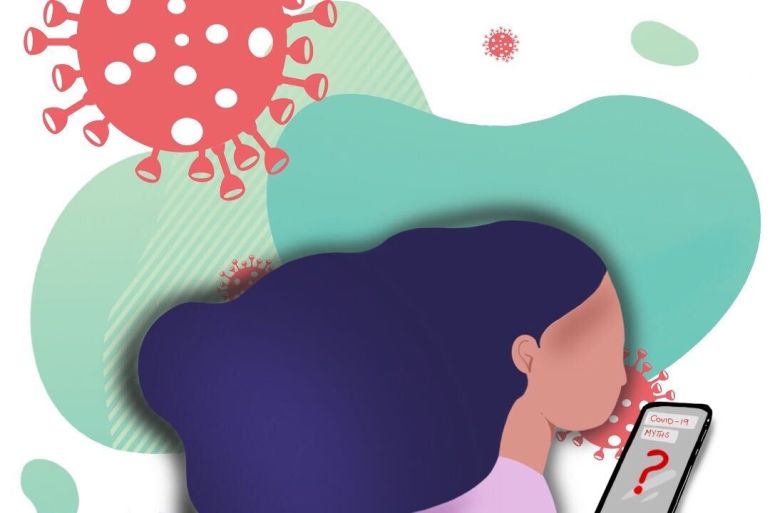COVID-19 myth-busting: Five things you should know
From water transmission, bleach and antibiotics to weather, clothes and shoes, we look at some common coronavirus misconceptions and how to stop their spread.

Editor’s Note: This series is produced in partnership with the World Health Organization (WHO).
Since the start of the pandemic, there has been a barrage of misinformation, conspiracy theories, rumours and myths circulating around the novel coronavirus.
Keep reading
list of 4 itemsCOVID-19: How to make indoor spaces safer
What are some of the biggest myths about COVID-19?This article will be opened in a new browser window
How do we tackle an ‘infodemic’ amid a pandemic?
From its origins and modes of transmission to the symptoms and treatment methods, a lot of questions have been asked.
Scientists and health experts continue with research to better understand the COVID-19 disease that has killed more than a million people around the world.
“Initially, there were a lot of unknowns about COVID-19. It’s a new disease, so there was quite a bit that we didn’t know in the early days,” said Melinda Frost, team lead at the WHO’s infodemics management pillar for the COVID-19 response.
“When we have that vacuum of information and a lot of people that are concerned about that particular topic, then myths pop up and spread,” she told Al Jazeera.
Sylvie Briand, director of the Department of Global Infectious Hazard Preparedness at the WHO, said the myths around treatments, drugs and vaccines are “sometimes fuelled by commercial interests”.
Meanwhile misinformation about intervention methods – like contact tracing and mask-wearing – creates confusion and sometimes results in “mistrust against institutions, governments, expertise and science”, she added.
Seven months into the pandemic, we look at five common misconceptions about COVID-19.
Myth 1: Water transmits COVID-19
According to the WHO, the coronavirus is primarily transmitted by droplets through direct or close contact with an infected person or indirect contact through contaminated surfaces, also known as fomite transmission.
Briand told Al Jazeera that the possibility of water transmission – either by drinking water or while swimming – has been widely researched and ruled out.
However, it is still important to maintain physical distancing while in swimming pools, she said.
In a recent WHO Q&A, Briand explained: “If you swim in a swimming pool or in a pond, you cannot get COVID-19 through water, but what can happen is if you go to a swimming pool, which is crowded and if you are close to other people and if someone is infected, then you can, of course, get affected.”
💻 There's a lot of misinformation online about #COVID19.
Follow the steps in the video to help protect yourself and others from #coronavirus misinformation 👇
Find out more 👉 https://t.co/sdmcBk6Afq pic.twitter.com/t1POatD0nZ
— WHO/Europe (@WHO_Europe) September 23, 2020
Myth 2: Bleach and alcohol can cure COVID-19
Drinking or spraying bleach as well as other disinfectants – such as methanol, ethanol and alcohol – on your body does not prevent or cure COVID-19.
Health authorities have strongly cautioned against their use, saying they should only be used to disinfect surfaces.
“Do not under any circumstance spray or introduce bleach or any other disinfectant into your body,” the WHO said on its website.
“These substances can be poisonous if ingested and cause irritation and damage to your skin and eyes.”
There are currently no specific licensed treatments for COVID-19, but several drugs are being studied in large clinical trials and more research is under way.

Myth 3: Antibiotics can kill coronavirus
Antibiotics work only against bacteria, not viruses, and are not recommended to treat or prevent COVID-19.
However, if you are hospitalised for COVID-19, antibiotics may be helpful in case of bacterial co-infection or pneumonia.
“COVID-19 is a viral infection and antibiotics are ineffective against viruses,” Dr Amir Khan, a physician for the United Kingdom’s National Health Service (NHS), wrote in an article for Al Jazeera.
“But some doctors who may be concerned about a risk of a secondary bacterial infection are prescribing them,” he added.
Myth 4: Weather affects COVID-19 spread
Coronavirus can be transmitted in any climate – hot or cold.
According to the WHO, cold weather and snow cannot kill the virus.
Exposing yourself to the sun or temperatures higher than 25 degrees Celcius (77F) will not protect you, it said.
“What we have seen, so far, is that some countries with hot climate have had outbreaks, but similarly, countries with a cold climate also have outbreaks, so it seems that the weather doesn’t significantly affect the COVID-19 transmission,” Briand said.
Myth 5: COVID-19 spreads through shoes and clothes
The risk of coronavirus spreading through shoes and clothes is very low.
Briand ruled out this possibility, based on the global tally of infections.
“If it were so transmissible, we would have had many more cases by now because then everybody would have it on their shoes and clothes. The main mode of transmission remains the respiratory route,” she said.
Still, as a precautionary measure for general hygiene rules, the WHO recommends leaving your shoes at the entrance to your home, especially in places where infants and small children crawl or play on floors.
How can you stop the spread of myths?
- Stay aware of the latest information
- Use trusted, science-based information resources such as the WHO or national public health agencies
- Check the source and try to ensure that the information you are sharing is scientifically sound before you share it
- If you know or believe something is false, report it
Follow Saba Aziz on Twitter: @saba_aziz